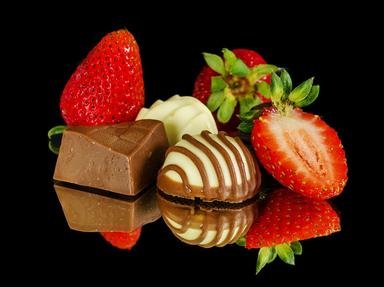Quiz Answer Key and Fun Facts
1. Victoria sponge cake is the perfect complement to a nice cup of properly-made tea. Which of these is NOT a place named Victoria?
2. A shell of marzipan, or sweetened almond paste, covers the luscious Sicilian cake known as cassata. What botanical family do almonds belong to?
3. The quintessential "death by chocolate" cake, Sachertorte was created in Vienna, the capital of Austria, in 1832. What royal house ruled the Austrian Empire at that time?
4. Originating in Jamaica, hummingbird cake is a rich layer cake made with tropical fruits, nuts and spices. What do hummingbirds normally feed on?
5. In spite of its name, Boston cream pie is a cake, filled with creamy custard and glazed with chocolate. Which of these great American writers was born in Boston in 1809?
6. Tarta de Santiago, or Santiago cake, is a delectable Spanish cake of medieval origin. The name "Santiago" refers to which of the 12 Apostles of Jesus?
7. Genoa cake, Genoese sponge, and Pain de Gênes are all named after the Italian city of Genoa. What other popular, non-food item is also named after this major Mediterranean port?
8. Though of German origin, marble cake is also popular in other parts of the world. Where would you be able to admire the famous Elgin Marbles?
9. Mooncakes are traditionally eaten in China during the Mid-Autumn Festival. In Chinese and Native American mythology, what animal - considered a pest in Australia - is believed to dwell on the moon?
10. Another British favourite, Madeira cake takes its name from a fortified wine. Which of these wines is not only fortified, but also aromatized with herbs and spices?
Source: Author
LadyNym
This quiz was reviewed by FunTrivia editor
agony before going online.
Any errors found in FunTrivia content are routinely corrected through our feedback system.

